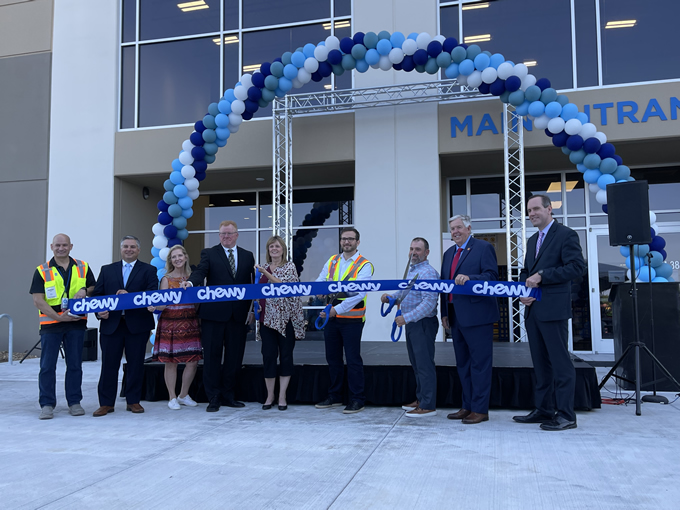The Future of Supply Chains Post-Pandemic

When COVID-19 hit, it revealed how fragile modern supply chains really are. Notably, it led to unprecedented consumption shock across the U.S. Who could forget the rush for masks, hand sanitizer, and toilet paper? And that was just within the first month. Throughout 2020, supply and demand rode the waves of panic buying.
COVID-19 also threw longstanding problems with foreign manufacturing into focus. For years, China was the go-to country for cost-effective manufacturing. However, when Chinese factories closed during the initial lockdown — and other countries quickly followed suit — pandemonium ensued. Undoubtedly, the breakdown of continent-sprawling medical supply chains caused the shortage of personal protective equipment (90% of which has been produced abroad since the ’90s).
Healthcare wasn’t the only industry impacted by supply chain disruptions. Shutdowns of global manufacturing capacity dealt a blow to the auto industry. Even after factories and showrooms reopened, monthslong delays for deliveries of raw materials, parts, and finished products slashed companies’ bottom lines. And because Americans are spending less on services and more on tangible goods, the U.S. is seeing massive traffic jams at major ports. In the San Francisco Bay, for example, cargo ships wait days to drop off their loads, containers accumulate at dockyards, and semis and trains can’t get everything out fast enough.
If all of this sounds chaotic, it’s because it is. But that should embolden manufacturing companies to reassess their supply chain strategy. After all, chaos breeds opportunity. With that in mind, here are three questions for decision makers to consider:
1. Should we invest in reshoring initiatives?
The pandemic shed light on the need for easily accessible production and labor, which renewed discussions around the benefits of reshoring. Companies that can source and manufacture products locally or regionally will stand a better chance of emerging from the pandemic unscathed. Reshoring initiatives are a trend that’s likely here to stay. More companies plan to manufacture within the U.S., so leaders should consider which states or regions have the best transportation and production capabilities based on their needs.
For instance, let’s say a company’s products require in-transit refrigeration and its customer base largely lives in the Midwest. Missouri’s centralized location makes it an enticing choice. It’s also a primary player in refrigerated warehousing and storage with a location quotient of 1.22. In fact, between 2010 and 2019, Missouri employment in refrigerated warehousing and storage grew by 17%, according to the Missouri Department of Economic Development. Company leaders should dig into existing data to see what makes the most sense for them.
2. Should we relocate to smooth out inventory flow?
Last-mile delivery has long been considered a growth obstacle in the distribution and warehousing industry — and COVID-19 certainly didn’t help matters. As manufacturers desperately tried to meet the demands of consumers, last-mile deliveries surged 10 times over. Yet a July 2020 survey determined that 61% of transportation and logistics organizations label it the most inefficient supply chain process.
With e-commerce deliveries rising 25% in 2020, companies need to innovate to increase the flow of inventory. For example, to combat unforeseen shortages and avoid stockouts, some companies are carrying “safety stock.” However, keeping extra stock could create warehouse management problems. As this inventory flow strategy grows in popularity, company leaders should watch for states that expand incentives to redevelop abandoned retail centers to serve as last-mile facilities.
3. How do we manage future uncertainty in supply chains?
There are many avenues to build more resilient supply chains. Companies can expand their inventory of raw materials, parts, and finished products. They can add storage capacity to meet spikes in demand. They can even take steps to guarantee surge capacity of important materials or parts to alleviate possible supplier disruption.
These kinds of risk mitigation methods are costly upfront but have the potential to bear tremendous fruit. After all, if a company’s supply chain is just as resilient and agile as a competitor’s but at a lower price point, they’ll gain market share.
The level of investment a company makes in supply chain risk management depends on various factors, including its risk appetite. But the result is supply chain performance that combines the benefits of distributed and centralized supply chain systems.
COVID-19 isn’t the first event to disrupt supply chains, but current global trade and domestic supply chain trends remain unprecedented. Companies should use this disruption as an opportunity to evaluate their supply chain management during crises. Changes that are made now will strengthen future supply chains for years to come.
Subash Alias is the CEO of Missouri Partnership, a public-private economic development organization available to assist businesses with their next expansion or relocation. Missouri Partnership is an expert resource to support companies’ site selection needs when the time is right to grow.
Comments (0)
This post does not have any comments. Be the first to leave a comment below.
Featured Product

